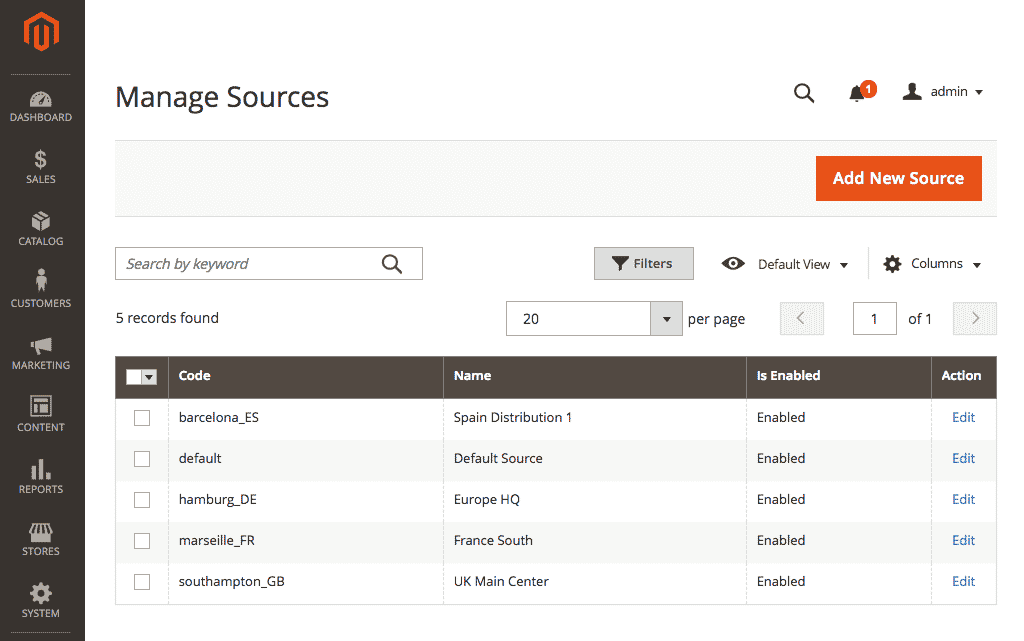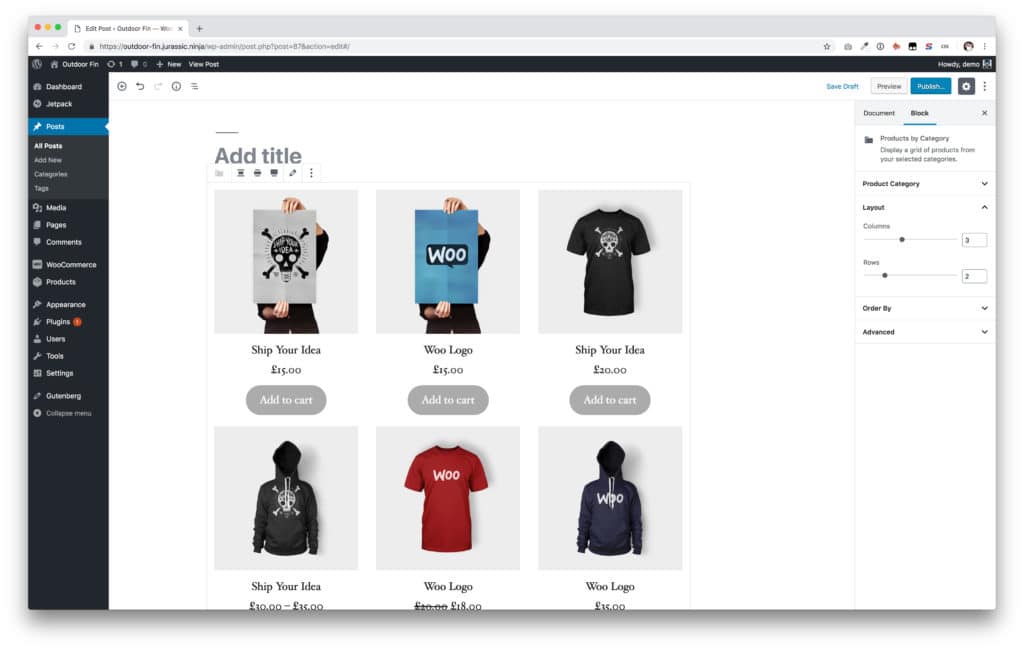Picking the right eCommerce platform for your business can help you achieve several crucial goals. We’ll help you make that choice by diving deeper into what the Magento, Shopify, and WooCommerce platforms have to offer.
Magento Content Management System (CMS)
What do websites from well-known brands like Nike, Ford, Land Rover, and Vizio have in common? They’re just a tiny fraction of the 170,000-plus stores that run on Magento, an eCommerce platform that’s open-source and “Designed to grow, built for flexibility.”

Why do such huge brands choose Magento, and how can this platform benefit your smaller business? Here are some of the highlights offered by its Community and Enterprise editions:
Pros of Magento CMS
- SEO-friendly with several built-in features to get brands in front of as many eyes as possible.
- Allows the final product to be deployed in the cloud, on third-party hosting, or on-site.
Thanks to multiple hosting options, makes it easy to optimize end performance for sites of varying sizes. - Supports major payment gateways like Stripe, PayPal, Authorize.net, and Amazon Payments.
- Permits store scaling up to 250,000 items, helping it stay true to its “Designed to grow” slogan.
- Offers tons of product-oriented features that can be configured to your needs.
Stays true to its “Built for flexibility slogan,” thanks to 5,000-plus extensions for complete customization. - Supports native product bundles, massive product catalogs, upselling, cross-selling, and more.
- Significantly improved performance through the release of Magento 2.
- Gives you the power to boost performance via minimized server response time, optimized pages, and more.
- The best of the bunch if scalability is your top goal.
While Magento’s highlight list may be impressive, it does have some downsides that should have you shop around first, such as:
Cons of Magento CMS
- Not user-friendly for beginners since it’s better suited for custom solutions that aren’t templated and ready to go out of the box.
- Due to its learning curve, Magento could force you to take on the time-consuming and costly task of finding experienced developers.
Companies with small budgets may be shocked by the typical cost of Magento projects, which hovers around $20,000 on the low end. - Even without hiring costly outside developers, choosing Magento as your platform comes with several costs.
- Looking at that last downside on the list, you may be wondering what costs are involved when using Magenta. Here’s a simple breakdown of what to expect:
Cost of Magento Content Management System (CMS)
- Magento Open Source Edition – $0.
- Magento Commerce (aka Enterprise) Edition – up to $125,000 per year.
- Magento Cloud Edition – up to $150,000 per year.
- Hosting – Varies according to store size. Dedicated servers: up to $800, shared Magento hosting: up to $150.
Shopify Ecommerce Website Builder
Some of Shopify’s most prominent clients include Taylor Stitch, HELM Boots, and UgMonk. This hassle-free eCommerce platform works well for both small and medium businesses. Web store builders who are just starting tend to prefer Shopify for its drag-and-drop interface that’s intuitive and easy to use.

Here are some of its biggest benefits:
Shopify Benefits for Ecommerce
- Ideal for someone who has never built an online store before.
- Eliminates the hassle of finding hosting since it’s based on the cloud.
- Easy to customize with over 60 paid and free themes.
- Comes packed with several built-in capabilities that can be easily expanded through the
- Shopify App Store that features over 3,000 apps.
- Supports over 70 payment gateways.
- Promotes proper SEO with a plethora of default features, plus additional ones available through the App Store.
- Offers solid performance, thanks to hosting support and more from the platform’s in-house team.
- Pricing is easier to swallow for beginners, with a basic plan starting at $29 per month.
- On the higher end, Shopify Plus can set you back $2,000 per month.
Cons of Shopify
Configurations aren’t as flexible if you are comparing it versus Magento.
Third-party solutions are an added cost you must account for.
WooCommerce CMS
Statistics show that when it comes to free solutions for building online stores, WooCommerce tops the list. The popular open-source plugin from WordPress is the engine behind such sites as Yousli, EcoKitty, and Porter & York. If you have a small store with a minimal budget, it may be your best bet.

Here are some of the top advantages WooCommerce has to offer:
WooCommerce Benefits
- Easy to configure, thanks to a host of flexible tools.
- User-friendly for anyone who understands WordPress on a fundamental level.
- Has several marketing, analytics, and SEO features to help grow a business and bring in new customers.
- Lets you choose from an impressive catalog of thousands of customizable themes to craft the perfect look for your site.
- Supports many payment gateways.
Cons of WooCommerce
Doesn’t offer dedicated hosting, which is something you’ll have to find on your own.
Too many extensions are fee-based instead of free, which adds to the overall cost.
Less-than-ideal performance and loading speeds when various extensions and plugins are active, which can negatively impact the customer experience and, eventually, your brand.
To achieve the desired performance, you will need to choose the proper hosting provider.



